The Broken Rice is called Kanki in gujarati. Kan meaning minute/small and Kanki means small grains of rice. Broken rice is extensively used in gujarati kitchens. We use them in our khichdi, to make dhokla and handva flour, make a variety of sun-dried crisps that are stored through the year and served as snacks or accompaniments to a meal. The broken rice is considered to be a cheaper option to whole grained rice and hence when a cooked rice dish does not call for grains of rice to be separate the Kanki is used especially to create the flour mixes. Flours for handva, dhokla, idara (a kind of dhokla that is eaten with aam-ras) and ataman (rice flour that is used as aid to roll paper thin Gujju rotli).
In the earlier days when no ready made flour mix were available, I remember my Mum washing the kanki and lentils until the water ran clean and send us on terrace with large patina of these wet grains that had to be spread over old saris or bedsheets that were neatly lined on terrace surface and held with bricks. I liked running my fingers through the spread and create some enticing patterns…the mix was later carried to the flour mill to be ground to a course flour. Each home made their own handva and dhokla mix with the rice to lentil ration balanced according to their palate.
During those times we also had our annual season of making some delicious varieties of sun-dried goodies from rice, sago, potatoes etc., for a person like me the dough or batter or mix of all these foods was as enticing as the resultant food itself. Licking the dal batter prepared for drying Vadi (sun-dried lentil dumplings), eating the khichu made to roll the Khichiya Papad (rice papads) was a must!! I hated being in school and missing all the fun the elder women of my family had creating this varieties….Such rituals are no longer practiced in urban homes and we do eat these foods but its come from store shelves not hand made by Dadi or Nani, mummy and loving aunts..
The Kothmir (coriander) Marcha (green chillies) Ni Kanki actually is a batter of one such sun dried food called the bibda. Bibda are cookie sized dried papad that are deep fried and eaten as snack or accompaniment to some one-pot meal vaghareli khichdi etc. Such snacks add the much needed crunch to an otherwise simple meal..They become the Wow factor.
Well looking at the title of this post, you all would be wondering how can I compare a rice dish originating from the Gujarati kitchens to a dish that has its roots in northern Italy! May be because Kanki sounds so deshi and Risotto sounds so foreign, so exotic!! And exotic food is something we all prefer to have these days..I would not complain for that but it upsets me when family members especially children refuse to eat humble local foods!! Risotto is just that, a creamy rice dish from Italy, so why not give a creamy rice dish of Gujarat a try??? I am hoping that by calling this Kothmir Marcha Ni Kanki a Risotto I might succeed in elevating its value a bit….
Kothmir Marcha ni Kanki is a comforting, nourishing food eaten piping hot during cold or rainy days or when you want to settle for a light meal. Kanki actually is lite to digest and is preferred when the meals have to be kept simple, lite and easily digestible.
The recipe I share today is a family recipe from a dear friend Pankti. This is how her mum-in-law prepares Kanki. The rice variety used here is Krishna Kamod – a small grained fragrant rice from Gujarat (more on that later). If possible try making it with a variety of fragrant rice to have the best experience of this creamy rice dish…and yes a generous drizzle of groundnut oil on the Kanki is a must…
Kothmir Marcha Ni Kanki/ Broken rice flavoured with Coriander and Chillies
Ingredients
- 1 cup Kanki/broken rice
- 1 teaspoon soda-bi-carb
- 4 tablespoons roasted sesame seeds
- 1/2 cup coriander, very finely chopped
- 5-6 green chillies, crushed well ( you may reduce the amount of chillies if you do not like it very spicy)
- salt to taste
- 7 cups water
- 5-6 tablespoons groundnut oil
Method
- Wash the Kanki till water runs clear.
- Place a large patila/dutch oven type casserole on flame.
- Add 7 cups of water, salt and soda-bi-carb to it.
- Add the washed Kanki to the water.
- Give it all a good stir and allow it to cook.
- Once the grains are almost cooked and most of the water has reduced add the chopped coriander, chilly paste and sesame seeds and mix well.
- At this point turn the flame to simmer and slide a griddle under the pan.
- Cover the pan and allow the Kanki to cook on very gentle heat, this is called ‘sijhava-devu’ where the grains cook on bare minimum heat, for a further 10 minutes or until the grains have become waxy when you press them between fingers and the consistency is like one you see in the picture.
- Serve piping hot with a generous drizzle of groundnut oil once served.
- Enjoy with some fried or roasted rice papads.
Me to you…
Slow cooking it for the last 10 minutes is a must, do not avoid the step. This helps in making the Kothmir Marcha Ni Kanki really creamy.
No water has to be skimmed out. The Kanki will swell up and absorb all the water. In fact that is the real consistency we should be aiming for. It does not have to be dry.
The roasted sesame seeds provide that slight bite to the dish.

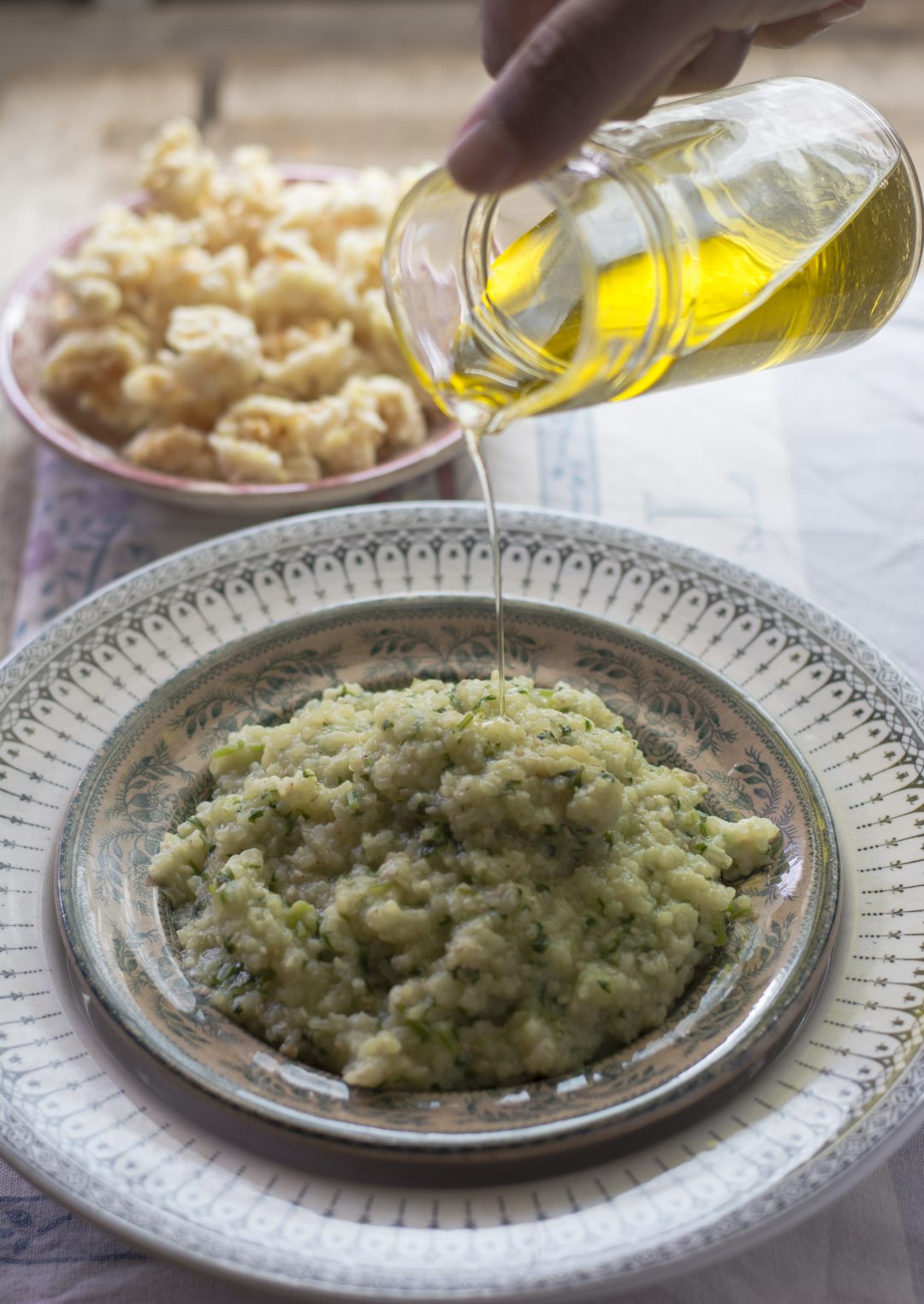
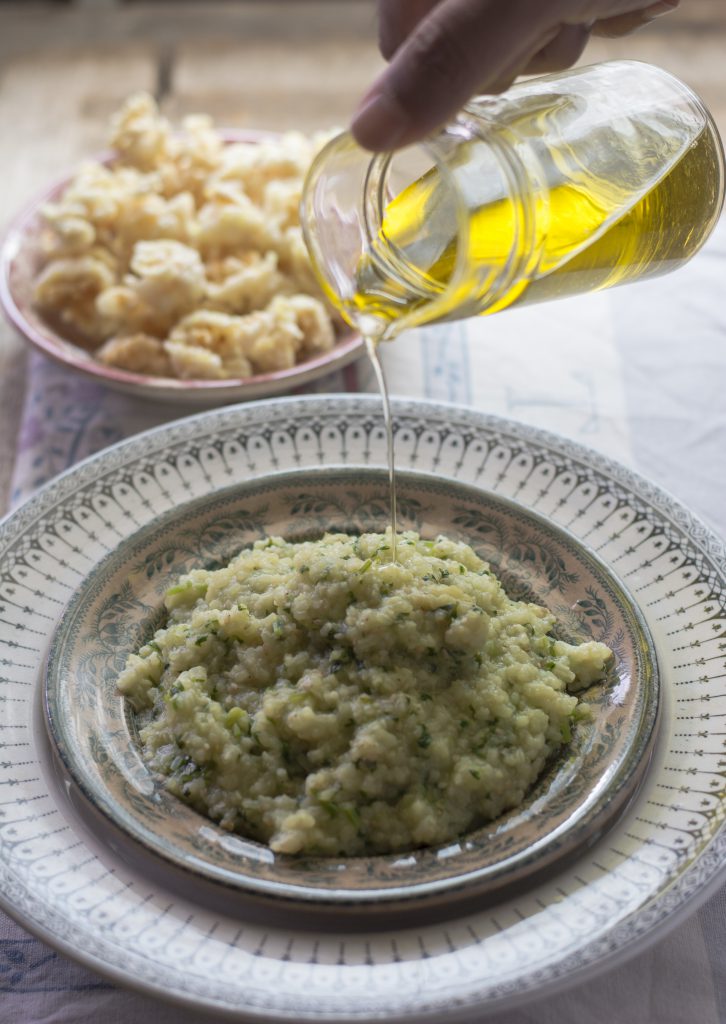

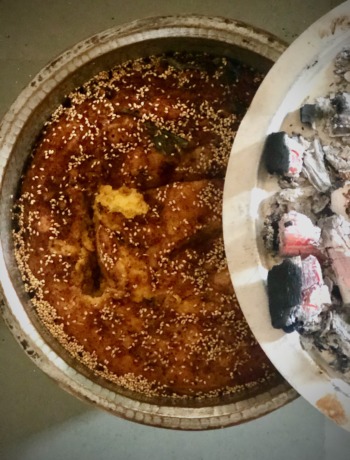
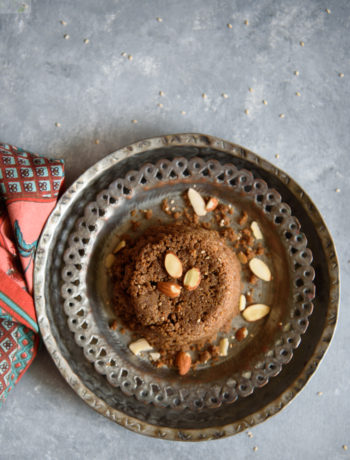
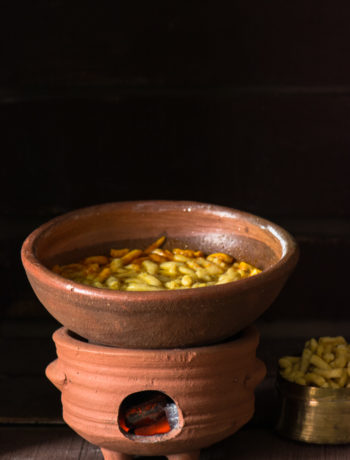
No Comments